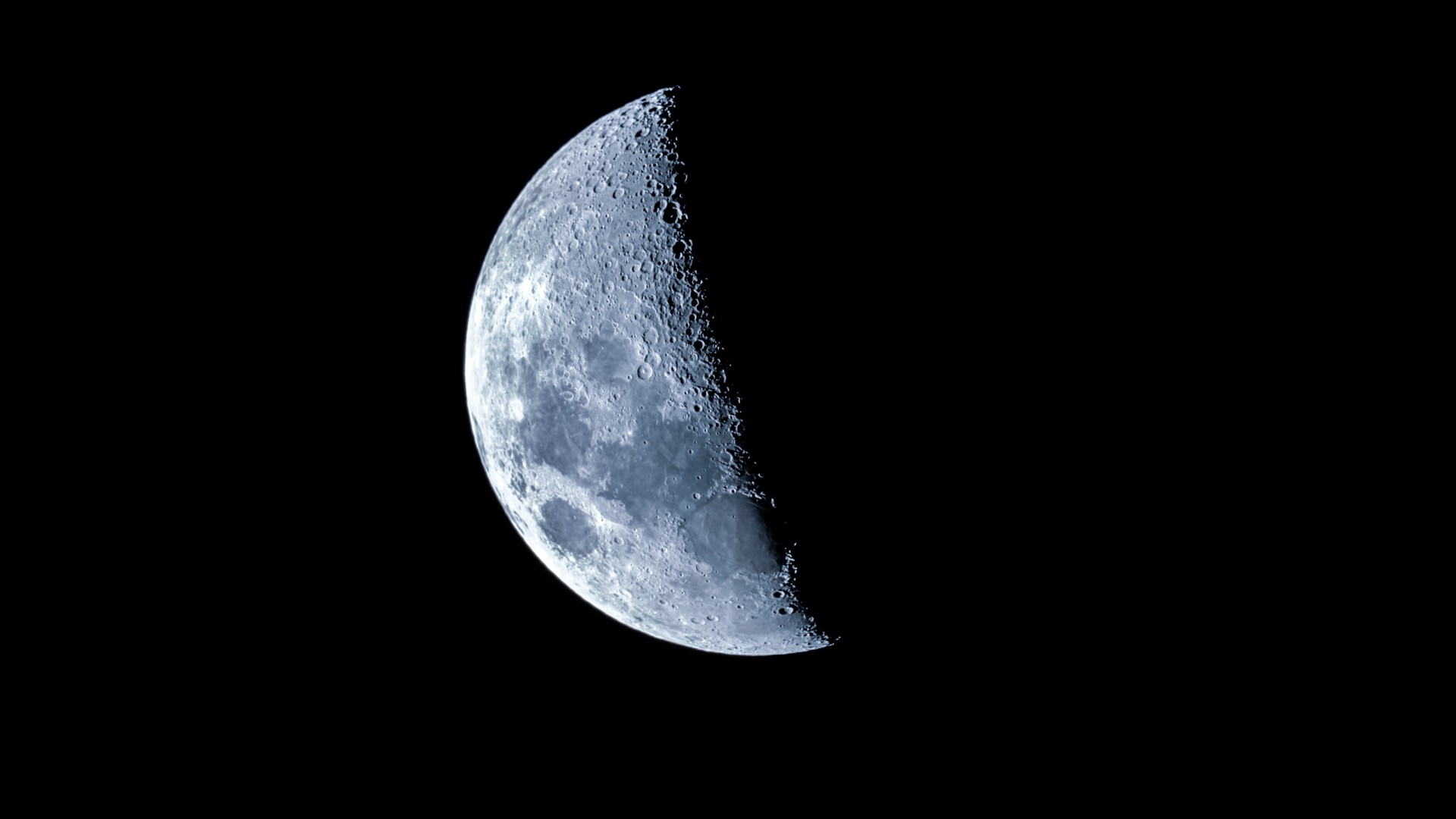From ancient legends and myths to modern scientific exploration, the moon has been a crucial element in shaping several cultures, spirituality and scientific understanding. As a distinguished luminary in our night skies, the natural satellite serves as a constant reminder of the limitless mysteries and wonders around the cosmos. There are numerous fun facts about the moon that, to date, remain lesser known. Let’s check some of the moon landing facts, shall we?

Fun Facts About The Moon
Keep scrolling down to read some interesting and fun facts about the moon.
1. Bootprints Lasting Forever
There is no atmosphere on the moon to erode or weather its surface, so the footprints, rover tracks, and other marks made by astronauts will remain there virtually forever.
2. Moon’s Fragrance
The moon has a distinctive smell described by astronauts as “gunpowder-like” or “spent fireworks.” This aroma is attributed to the moon’s soil, which contains various chemical compounds from micrometeorite impacts over millions of years.
Check Out – Facts About Snakes
3. Moonwalking Animals
Humans weren’t the first creatures to moonwalk! Some animals, like cats and certain insects, have exhibited a form of moonwalking on Earth due to low gravity.
Also Read: Interesting Facts On India
4. Moon’s Age
The moon is approximately 4.5 billion years old, making it about the same age as Earth.
Also Read: Kinky Facts From History
5. Moonquakes
The moon experiences moonquakes, which are seismic activities caused by tidal forces from Earth. They are much weaker than earthquakes but can last for hours.
6. No Atmosphere
Unlike Earth, the moon has no atmosphere, which means there is no air to scatter sunlight, resulting in a pitch-black sky even during the day.
Also Read: Mind-Blowing TIL Facts
7. Extreme Temperatures
The moon’s surface temperatures can vary dramatically. During the day, it can reach up to 127 degrees Celsius (260 degrees Fahrenheit), and at night, it can plummet to -173 degrees Celsius (-280 degrees Fahrenheit).
8. Water Ice
Water ice has been discovered on the moon’s poles in permanently shadowed regions of craters. This discovery suggests the possibility of using lunar resources for future space exploration.
Also Read: Interesting Facts About Education
9. Moon’s Gravity
The moon’s gravity is about 1/6th of Earth’s, which means an object would weigh much less on the moon compared to Earth.
10. Moon’s Brightness
The moon’s brightness varies throughout the month due to its changing position relative to the sun and Earth.
The Moon Landing Facts
The first few moon landings were remarkable achievements in human space exploration, and they provided a wealth of scientific knowledge about the moon and our universe.
1. Apollo 11
The historic Apollo 11 mission was the first crewed mission to land on the moon. It took place from July 16 to July 24, 1969. Astronauts Neil Armstrong, Buzz Aldrin, and Michael Collins were part of the mission.
2. Eagle Has Landed
On July 20, 1969, the lunar module named “Eagle” carrying Neil Armstrong and Buzz Aldrin landed on the moon’s surface in the region known as the Sea of Tranquility. Upon landing, Neil Armstrong famously said, “The Eagle has landed.”
3. Neil Armstrong’s First Step
Neil Armstrong became the first person to set foot on the lunar surface. On July 20, 1969, he stepped down from the lunar module’s ladder and onto the moon, stating the iconic words, “That’s one small step for man, one giant leap for mankind.”
4. Buzz Aldrin Joins
Minutes after Neil Armstrong, Buzz Aldrin descended from the lunar module to join Armstrong on the moon’s surface. They spent about two and a half hours conducting experiments, taking photographs, and collecting samples.
5. Michael Collins
While Armstrong and Aldrin explored the moon, Michael Collins remained in lunar orbit aboard the command module, Columbia. He orbited the moon alone, waiting for his fellow astronauts to return.
6. Moon Rocks
The astronauts collected rock and soil samples from the moon’s surface during their missions. In total, they brought back over 840 pounds (380 kilograms) of lunar material, which has been invaluable for scientific research.
7. Multiple Moon Landings
The Apollo program included a total of six moon landings from 1969 to 1972. The missions were Apollo 11, 12, 14, 15, 16, and 17. Each mission had specific objectives and explored different areas of the moon.
8. Moon Buggies
The Apollo 15, 16, and 17 missions brought lunar rovers, also known as moon buggies, to the moon. These electric vehicles allowed astronauts to cover more distances and conduct more extensive explorations.
9. Return to Earth
After spending a few hours on the lunar surface, the astronauts re-entered the lunar module and later rejoined the command module for their journey back to Earth. They splashed down safely in the ocean to be recovered by the waiting recovery team.
10. Moon Flags
During the Apollo 11, 12, 14, 15, 16, and 17 missions, American flags were planted on the moon by the astronauts. However, due to the lack of atmosphere and harsh conditions, the flags have likely been bleached white and are no longer standing.
Frequently Asked Questions (FAQ):
Q1: How far is the moon from Earth?
The average distance from the moon to Earth is about 238,855 miles (384,400 kilometers). At its closest, the moon can be approximately 225,623 miles (363,104 kilometers) away from Earth, and at its farthest, it can be about 252,088 miles (405,696 kilometers) away.
Q2: What is the average surface temperature of the moon?
The average surface temperature of the moon is approximately 127 degrees Celsius (260 degrees Fahrenheit). This temperature can vary significantly depending on the moon’s exposure to sunlight.
Q3: Does the moon have an atmosphere?
No, the moon does not have a substantial atmosphere like Earth. It has an extremely thin and tenuous exosphere, which is essentially a near-vacuum. The moon’s exosphere is composed of scattered atoms, ions, and molecules that have originated from various sources, such as the solar wind, the moon’s surface, and impacts from micrometeoroids.
Q4: How long does it take for the moon to orbit around the Earth?
The moon takes approximately 27.3 days to complete one orbit around the Earth. This period is known as the “sidereal month” or “lunar month.” During this time, the moon completes a full revolution around Earth, returning to roughly the same position relative to the stars in the sky.
These fun facts remind us that the moon is not only an astronomical spectacle but also a source of inspiration and curiosity for humanity.
You May Also Like This,
Bollywood Facts That Shouldn’t Live In My Head Rent Free







































